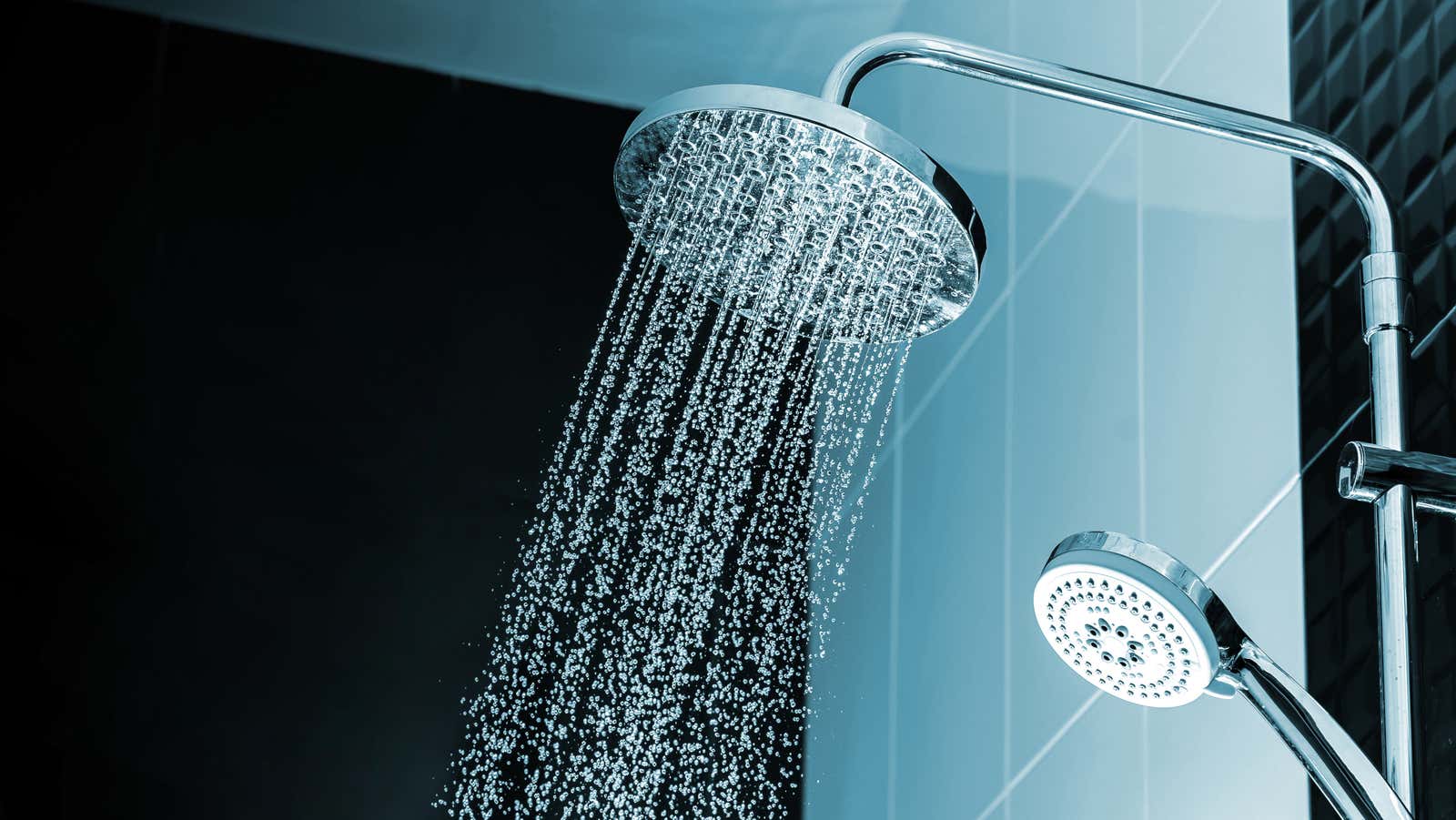How Can I Improve the Water Flow in My Shower?

If you think about it, the fact that there is running water in our homes is just a miracle. Unlike other moments in history – and other parts of the world – many of us have the privilege of turning a few knobs and showering with clean hot water. But sometimes the pressure of this water is not ideal. This can be especially frustrating if you shower in your own home, which you know can do better but is somehow ineffective when it comes to pressure. If you are dealing with this, here are a few things to try.
Check the water pressure
Sometimes you can easily tell if you are dealing with low shower pressure, but other times you may need a quick check to be sure. In this case, you will need a measuring jug. Just follow the infographic above : take a measuring jug (ideally one or two liters), turn on the shower at full power, and then determine how long it takes to fill the jug with one liter of water.
According to British plumbing company Anchor Pumps , if it takes more than six seconds, then you are probably dealing with low water pressure. However, the low pressure could have several different reasons. Here are some easy ways to fix it yourself without calling the plumber.
Clean the shower head
We put this first because sometimes the simplest solution is the one we overlook. Over time, showerheads become clogged with mineral deposits and other debris, so if you haven’t cleaned your showerhead in a long time (or ever), start here.
Instead of buying disposable cleaning tool , simply unscrew the shower watering can and let it soak in a bowl of vinegar for eight hours . If you see any remaining mineral deposits after doing this, The Spruce recommends using a toothpick to squeeze them out. If it’s still clogged, it’s probably time to buy a new shower head.
Check your shower head and settings
Another possible cause of low pressure is the presence of a water-saving shower head. This may be the case if you have just moved to a new location and immediately noticed that the pressure is low. In this case, the previous renter may have installed a water-saving shower head to reduce flow and conserve water. While it’s better for the environment, it may not remove all the foam from your hair.
Some low flow shower heads have a flow limiter that allows you to adjust the water flow. Resetting the flow restrictor might be the solution to your problem. To try it out, follow these vertical Home Guides SF Gate instructions:
Use wide-mouth pliers or pipe wrench and rag to disassemble the shower head. Many shower heads come with a built-in flow restrictor to help homeowners not waste water. The flow restrictor is usually a white plastic disc with a small hole in the middle. Water must pass through this small hole before it comes out of the shower head. By removing the flow restrictor, you can improve the shower flow.
Check the main water valve.
If you’ve tried both of the possible solutions above and still have problems, you may need to check the main water valve, which controls the amount of water flowing into each of the fixtures in the house. It can be partially closed, which can definitely affect the flow of water in the shower. There are two main valves you need to check, according to experts at Terry’s Plumbing in Pittsburgh, PA:
Main Valve: The water supply to your home will be located next to your water meter. You will see two valves; turn both of them counterclockwise to fully open.
Shower Valve : This will likely be located in your basement, basement, or on the access panel behind the shower. Turn counterclockwise to open.
If none of them are partially closed, it could be a problem with your curb water faucet, so you will need to contact your local municipality.
Call a professional
At this point, you probably want to call a plumber if you were unable to fix or track down a water pressure problem. They should be able to pinpoint and then fix the problem by returning you to the shower with sufficient water pressure as soon as possible.
This story was originally published on March 1, 2013 and has been updated on April 23, 2021 with additional information to align with Lifehacker’s style guidelines.